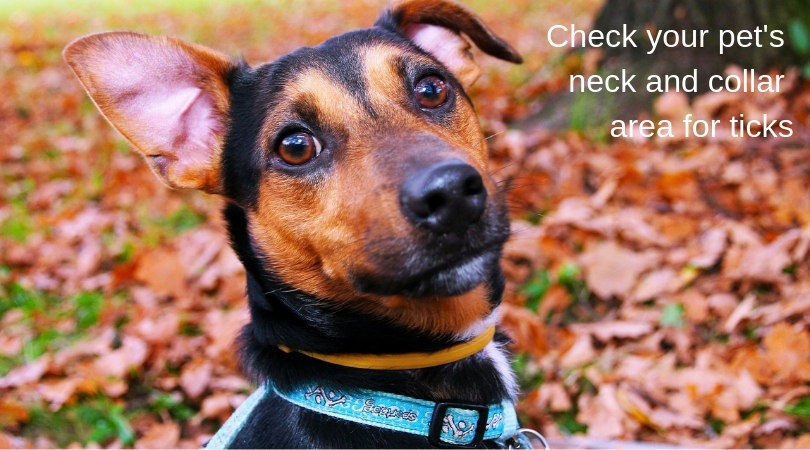Ticks are the vampire of the pet world. They latch onto your dog or cat, attach themselves and suck their blood until they’re engorged with your pet’s blood. Then they fall off and rest until they’ve digested their meal.
What happens next is they may quietly die, or they may feel ready for another feeding. It depends on the life cycle of the tick, the type of tick, and other such factors.
Of course, if you’re like most pet parents, you’d like to keep your tick encounters to a minimum, as in, if you never encountered one, that would be okay with you. But since you do have a pet and we do live in the world, it’s good to be prepared for these parasites.

Preparation starts with preventatives, like oral or topical treatments that we can dispense, and regular tick checks of your pet. It’s far easier to get rid of a tick before it gets attached to your pet, and you can do that by knowing where ticks like to hide on your dog or cat.
Where Do Ticks Hide?
Turns out, these parasites have favorite hiding places on animals. If you get in the habit of checking your pet over, you’ll be more likely to catch ticks before they latch onto your dog or cat.
- Between the Toes - Ticks love burrowing in this area between your pet’s toes -- and with good reason. If you’ve ever examined your pet’s paws, you’ll see there are many nooks and crannies. The area in between each claw is warm, dark, and safe from sight, so it makes a good hiding place.
- In and Around the Ears - One common place to find ticks is behind your pet’s ears or even inside the ears (this is especially true if your dog has floppy ears.) Make checking your pet’s ears for ticks part of your regular tick check.
- The Base of the Tail and Groin - Ticks are attracted to moist areas, so give your pet’s tail a thorough overview, and don’t overlook your pet’s groin.
- The Neck - Many pets have a scruff of fur around their necks. It makes a great place for ticks to burrow in and make themselves comfortable. Also, if your pet wears a collar on a regular basis, be sure to check on the inside of the collar as ticks have been known to hang out there.

As you probably know, ticks are the carriers of all kinds of diseases, including Lyme disease. They can make your pet very sick and even temporarily paralyze them. Make it a habit to check your pet every time you come in from a walk and use a regular preventive product. Hopefully, then, you won’t have too many tick encounters, but please be sure to contact us if you have any questions about parasite and your pets!

